Book Reviews
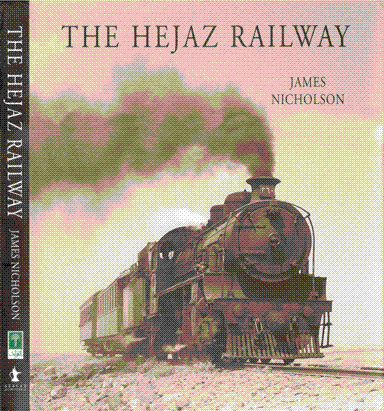
The Hejaz Railway, by James NicholsonPublisher: Stacy International 2005193 pages, Hardcover, 26 cm X 31 cm Contains over 90 color photos and over 100 b/w photos plus 11 maps and plans
Reviewed by Dan Gibson, Webmaster,
Nabataea.net/Hejaz Railway, Nov. 2005
At the first glance Nicholson’s new book on the Hejaz Railway looks like a glossy coffee-table picture-book, but upon closer inspection, it proves to be full of fascinating information, and valuable old photos that have never before been published. Nicholson has done in-depth research, gathering his information from hundreds of sources making this book a new authoritative source for the history of Hejaz Railway.
Nicholson’s writing style is easy to read, and he has obviously done his research. Not only does he provide interesting background color, (see box below for example) he has discovered many fascinating photos from the early days of the railway’s operation. When tackling the events of the First World War, Nicholson has done a splendid job of presenting an accurate picture of the war, including the involvement of many different British officers. Thankfully, Nicholson doesn’t allow the Lawrence of Arabia story to sidetrack him from pursuing the wider picture of the war for the Hejaz Railway.
This book addresses a wide variety of topics, but the two main themes are: 1) the initial building of the railway, and 2) the struggle for the railway during World War One. I have included a detailed outline of the book for those wishing to learn exactly which topics Nicholson includes. The contents are as follows:
Introduction
1. A ‘Wildly Improbably’ and ‘Fantastic’ Scheme
- The Political Background, The Decline of the Ottoman Empire
- Abdul-hamid II’s Response to European Expansion
- Early Railway Development in the Ottoman Empire
- The Hejaz Railway, The Birth of an Idea
- Proposals for the Railway
- Preparations for the Railway
2. Building of the Railway I (Main Line)
- Early Decisions and Difficulties
- Western Involvement
- Heinrich Meissner - The Laying of Solid Foundations
- The Line Advances
- Early Services
- Manpower and Materials
- Rails and Rolling Stock
- Construction
- Stations
- Working Conditions
- Technical Difficulties
- Ma’an - Gateway to Arabia
- Railway Services
- Tabuk Inauguration Ceremony 1906
- Tabuk-Al Ula
- Medain Saleh and Al Ula
- Opposition to the Railway
- Al Ula - Madinah
3. Building of the Railway (Branch Lines)
- Haifa - Deraa Branch 1905
- Deraa-Bosra Branch, 1912
- Haifa-Acre Branch 1913
- Extension: Damascus Qadem to Damascus Kanawat, 1911
- Afule-Nablus Branch 1912 - 1915
- First World War Branches/Extensions
- Projected Branches and Extensions (Makkah, Jeddah, Salt, Aqaba)
4. Paying for the Railway
- The Campaign for Donations
- Ottoman Donations
- Foreign Donations
- Medals, Other Sources of Revenue
- The Absence of Corruption
- Overall Income and Expenditure
5. Running the Railway
- Sherif Hussein and the Young Turks
- Security Measures
- Passenger Services
- Pilgrims
- Troop Movements
- Freight
- Rolling Stock
- Maintenance
- Administration and Personnel
- Economic Development
- The Hejaz Railway on the Eve of the First World War
6. Outbreak of the First World War
- The Ottoman Empire Enters the War
- Sherif Hussein and the British
- The Stotzingen Mission
- The Arab Revolt, First attacks on the Railway
-The Arrival of the British
- T.E. Lawrence
7. The War along the Railway I (The Hejaz)
- The Significance of Wejh
- Bimbashi H. Garland: First Train Derailed - Towaira, Feb 1917
- Lt. Col. S. Newcombe: Raids to the North of Medain Saleh, Spring 1917
- T.E. Lawrence: First Raid on the Railway - Abu Na’am March 1917
- T.E. Lawrence: Mining of a Train at Km 1121, April 1917
- Royal Flying Corps: The ‘Arabian Detachment’ No. 14 Squadron
- Coordinated Offensive on the Railway: Lt. Col. S. Newcomb and Lt. Col. P. Joyce, July - Aug 1917
- Bimbashi H. Garland: Raids on the railway, Istabl Antar - Hedia, Aug 1917
- Results of the Railway Campaign in the Hejaz
8. The War along the Railway II (Aqaba and Northwards)
- The March for Aqaba
- T.E. Lawrence: Diversionary Attacks on the Railway, June 1917
- The Capture of Aqaba, July 1917
- Air Attacks, 1917
- Arab Attacks, Autumn 1917
- T.E. Lawrence: The Troop Train, Mudawwara, Sept 1917
- T.E. Lawrence: Raid on Supply Train - Bir Shedia, Oct 1917
- Effects of the Raid
- T.E. Lawrence: The Raid on the Tel Shehab Bridge, Nov 1917
- T.E. Lawrence: Attack on Train at Km. 172 Nov 1917
9. The War along the Railway III (The Road to Damascus)
- Allied Offensive - Palestine, Winter 1917
- Raid on Tel Shahm, Jan 1918
- Arab Raids, 1918
- Spring Offensive, 1918, The Breaking of the Railway
- Cutting the Railway, Ma’an to Qatrana, May 1918
- Advance on Damascus, Sept - Oct 1918
- The Final Offensive, Sept 1918
- The Surrender of Madinah, Jan 1919
10. The Railway after the First World War
- The End of Hostilities - Damage Assessment
- Post-War Arrangements
- The Inter-war Years
- The Railway in the Modern Era: Attempts at Reconstruction
- The Railway Today
Appendix 1. Restoration of Madinah Station
Appendix 2. Hejaz Railway Stations and kms
- Damascus - Madinah Line
- Haifa - Deraa Branch
- Deraa - Bosra Branch
- Afule - Nablus Branch
Chapter Notes (References for each chapter)
Bibliography
Index
Review
Most sections include substantial material and accompanying photographs. The photographs and illustrations fall into three classes. There are over one hundred old black and white photos. (None of them appear on this website, and I suspect most of them are the first time in print). There are more than 90 color photographs taken in the last couple of years, all of them crisp, clear, and beautifully presented. There are also many illustrations, including 11 maps and plans. The map on page 13 fills a complete page and is worthy of note as it includes elevations. As I have never seen this map before I have reproduced a small thumbnail of it so that readers can compare it with maps they may have.
All in all this, is a wonderful book, well written, beautifully illustrated, and handsomely bound. Simply put, it is a ‘must have’ for anyone serious about the history of the Hejaz Railway. It is available from Amazon.com and other online booksellers.
-————————————
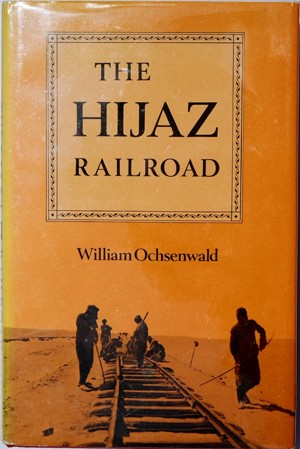
The Hijaz Railroad by William OchsenwaldUniversity Press of Virginia, Charlottesville1980, Hardcover, 169 pages
\ Contents
\ Preface
\ Abbreviations
\ Introduction
\ Construction
\ Financing
\ Operations
\ Impact on Society
\ Conclusion
\ Appendix: Principle Stations of the Hijaz Railroad in 1914
\ Selected Bibliography
\ Index
Hijaz Railroad
Ochsenwald Cover
Book Review
This book tries to look at the Hijaz Railroad from the perspective of the Ottoman Empire, rather than through the eyes of tourism, or the British victory in World War One. The photographs in the book were taken for Sultan Abdulhamid II in the 1900s, and were reproduced in the book with the permission of the Istanbul University Library.
The railways and roads of the Ottoman Empire were mostly constructed by Europeans, but he Hijaz Railway was financed, constructed and operated by the Turks themselves. It was an effort to contain European imperialism, and the Turks had to expand their areas of conscription and taxation into areas that were formerly autonomous. This came at a time when a new government had taken over, and when financial difficulties plagued the empire. In Beirut in 1901 1,300 troops mutinied for ten months ‘back pay.’ In Damascus in December 1902 about 100 officers seized a telegraph office and cabled the sultan, demanding their arrears be paid. They were told that there were no funds to pay them. Salaries wee low and paid irregularly, and deaths among Turkish troops in the Arab provinces were high because of bad sanitation, poor military health, and difficult conditions of service.
After 1891 there was nearly continual warfare in Yemen, with major uprisings taking place in 1891, and 1904. By 1905 the capital city had been lost to the rebels. Much of the highlands of Yemen remained effectively independent of Ottoman control, even during times of peace. Poor military transportation on land was overcome only be sending troops to Yemen by sea. Naval communication with Yemen depended upon the Suez Canal, which could be closed at will because of the English who controlled Egypt. Syrian reserves en route to Yemen revolted in 1903 while in transit though the Suez Canal. They were eventually sent to work on the Hijaz Railway.
The Ottomans enjoyed success in the Greek War because their troops could be mobilized along the Thessaloniki-Constantinople Railroad. The Ottoman government considered the railroad of major strategic importance in controlling their empire. The first section of the railroad would stretch from Damascus to near the port of Aqaba on the Red Sea. This section of railroad would by-pass the Suez Canal, and thus illuminate the need to send troops through British controlled area. The second part of the Railway would then take the troops as far as Medina. This section of railway would also be useful and financially beneficial in the transport of pilgrims to Medina where they could travel on to Mecca twice a year. The third section of railway, from Medina to Yemen was never built. An alternative route, from the coast of Hodeidah in Yemen up into the highlands was started on, but was never completed.
Construction
The construction of a railroad was one of the most complex administrative and engineering tasks undertaken by governments in the 19th century. The Turks further complicated the process by wanting to use only Ottoman citizens and Ottoman goods for construction. Thus the goal of wanting to complete the railroad quickly and inexpensively could not be achieved. In this book, William Ochsenwald goes into great detail to explain how money was raised, where workers were recruited, how local administration was organized, the various groups that were contracted, the materials used and some of the problems that were encountered.
During construction the rail line between Beirut and Damascus became a bottle neck and a second line was needed. This line was built between Haifa and Dera, and was used for exporting grain from the Dera region as well as importing goods for furthering the rail line. Another branch line father south was considered, but the port at Aqaba was considered inadequate for unloading large ships. Eventually several smaller branches were built: Haifa to Acre to increase the port size, Afula to Nablus, and Dera to Busra, as well as a short branch line into the heart of Damascus.
Financing
The Ottoman Empire needed to find new sources of income to finance the Hijaz Railway. There were three major groups of Muslims who were the source of funds: Ottomans who were forced to provide money for the railway, Ottomans who donated voluntarily, and Muslims who lived outside the empire. Financial collections were started in 1900. Since many records were destroyed, historians have not been able to accurately piece together a comprehensive view on what took place. However, records are in place for an eleven month period from 1902 - 1903. While many Ottomans were forced to donate, popular support for the railroad was greater outside the empire. Large collections took place in Egypt and India. All together the so-called gifts reached 1,100.000 TL.
Ochenwald goes into detail as he looks at the financial organization behind the railway, the official donations, private donations, and money raised outside of the empire. He also looks at the publicity that the Ottomans used, and the taxes they levied. In the end, the total revenue that was raised was 3,975,443 T.L.
Operations
Once the railway was constructed the problem of daily operations came to a head. Would the railway use foreign operators, or could Turks be trained to run the railway.
Ochenwald goes into detail looking at the central and local administration network, and the personnel that ran the railway. He examines the passenger operation, noting that the sale of tickets slowly rose over the years. In 1909 there were 19,965 pilgrims using the railway. This rose to 31,416 by 1914. While this book does not mention this, it was common opinion among many Muslim pilgrims that the pilgrimage should really be taken by camel caravan. The railway was often called “The Women’s Pilgrimage” and considered useful for women, elderly, and the sick. (.ed) In time, however, the railway gained popularity. The book also notes that in 1908 there were 8,480 military passengers, and this rose to 147,586 by 1914. The book also goes into freight operations, listing the railway as transporting between 65,000 tons and 112,000 tons per year.
Impact on Society
The Internal History of the Hijaz Railroad can be used as a way of measuring three major issues: The Ottoman Empire’s ability to construct and finance a modern enterprise, the efficiency with which the empire could operate such a railroad, and the independence of the empire from Europe in personnel, finance, and material. The impact of the railway was also felt on the Bedouin who gained cash each year by guiding pilgrims to Mecca. With the loss of this cash, they began to feel resentful of the Ottomans, especially with increased taxation and conscription.
Resentment was also felt in towns and villages. The book points out that in the town of Kerak there was a rebellion in 1910. Kerak was about fifteen kilometers from the Hijaz station of Qatrana. The tribes in the area united together. The Tribes that were responsible for guarding the railway did not receive their pay, so they robbed a train, killed some railroad workers, and destroyed a section of track. The ‘Atiyya tribe then attacked the railroad near Ma’an. Qatrana station was destroyed, and the rail line taken up. The Turks were slow in responding, because many of their railroad cars were south of the destruction. Eight days later though, the Turks sent in troops and put down the revolt, executed some of the rebels, and looted the town.
The book also points out how the railway brought with it a boom. As an example, while the railway was being built, over 1000 workers lived in the town of Ma’an. The Ma’anis thought that they were developing into a major center, but when the railroad construction ended, the workers all left, and Ma’an returned to a rural center.
The main impact on society though, came in the Hauran district that could suddenly export their wheat to the world. Between 1903 and 1912 gain amounted to over half of the goods transported on the rail line between Damascus and Haifa.
Ochenwald goes on to look briefly at the French railway, the Dama, Hama et Prolongements Railroad, and the German Baghdad Railroad. A map of these railroads would have been nice, but unfortunately no map was included.
Overview
All in all this is a very good book, although it is only 170 pages in length. It is not as detailed as some other books, but it gives a good overview of the financing, construction, and operation of the railway. For those who would like more detail, especially about the locomotives and cars that the railway used, they should consult Hedjaz Railway by R Tourret.
Book Review by Dan Gibson, Nabataea.net
-——————————–
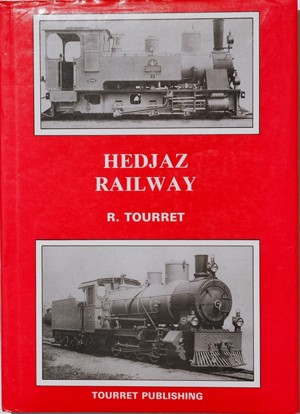
The Hedjez Railwayby R.Tourret Tourret Publishing, 1989 ISBN 0-905878-05-1Hardcover 181 Pages
A book review by Peter Herrett
CONTENTS
Introduction
Acknowledgements
Chapter 1) Beirut-Rayak-Damascus railways and Damascus-Mezerib railway. 1894-1914
Chapter 2) Hedjaz Railways, Haifa-Dera’a Ma’an-Medina 1900-1914
Chapter 3) Hedjaz Railways, Haifa-Dera’a branch and its branches 1902-1914
Chapter 4) Hedjaz Railways rolling stock. 1900-1918
Chapter 5) Lawrence of Arabia and the Palestine campaign.
Chapter 6) Hedjaz Railways in Jordan and Palestine. 1918-now.
Chapter 7) Chemins de Fer du Hedjaz in Syria and Lebannon. 1918-now
Bibliography
Appendix
- Hedjaz Railway locomotives.
- CF DMP and TL locomotives
- Post WW2 Hedjaz Railway steam locomotives.
- Post WW2 Hedjaz Railway General Electric diesel locomotives.
REVIEW
The Hedjaz Railway was built by the Turks, with German assistance, to maintain the Ottoman grip on their Arabian empire. Work started on the main Damascus to Medina section in 1900 and was completed in 1908.
Despite many books being written about the railway over the years there has been little written from the railway side, indeed it is believed that this book is the first one to give comprehensive details of locomotives, carriages and wagons. It contains very detailed information on the technical aspects including descriptions, weights, dimensions, drawings, manufacturers, serial numbers, dates and so on, even time tables. However there is sufficient background on the ME conduct of the war, in Palestine and Hedjaz to put it all into context, with the exploits of T.E. Lawrence being covered in considerable detail.
Financing and construction details with lots of fine period black and white photos together with detailed maps also contribute to it being suitable for the general reader as well as the railway buff.
The various branch lines to Palestine, Lebanon and Syria are also well covered with their history continuing beyond WW1 to the 1970’s, again all well illustrated with photos and maps.
-————————————-
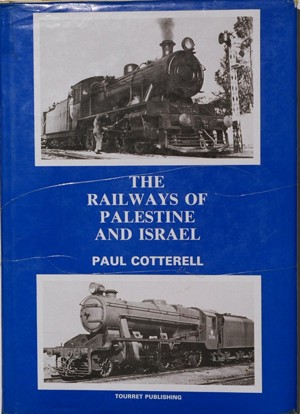
The Railways of Palestine and Israel by Paul Cotterell Tourret Publishing ISBN-13 978-0-905878-04-1; ISBN-10 0-905878-04-3; A4 Hardback; 150 pages
THE RAILWAYS OF PALESTINE AND ISRAEL
PAUL COTTRELL
Tourret Publishing, 1984
It’s been thirty years since Paul Cottrell’s remarkable book –The Railways of Palestine and Israel was published. Since the book’s publication the Israel Railways (IR) have continued an aggressive program of modernization and expansion. So, those wishing to learn about the IR in the late 20th and 21st centuries should begin by reviewing the long excellent internet article published by Wikipedia.
But for those interested in Middle East history and the role of the railways in Palestine and Israel during the late 19th and 20th centuries, Cottrell’s book is required reading.
Cotterell’s research is extensive. After discussing “Early Disappointments” in Chapter 1, he turns his attention to the first railway which opened on September 26, 1892 connecting Jaffa and Jerusalem. The chapter covers the period 1892 to 1914 and features an excellent map, fascinating photos, a detailed text, and a short summary of the Hedjaz Railway. Cotterell deliberately minimizes his treatment of the Hedjaz, because R. Tourret was shortly to produce his definitive history of that line.
Chapter 3 is particularly interesting because it covers World War I. No less than 5 gauges were laid down in what was then Palestine and are illustrated in one of the two excellent maps. Again, the photos are intriguing especially one showing friends, relatives, and onlookers watching a trainload of Jewish recruits for the British Army pulling out of Jaffa. Cotterell covers British General Allenby’s successful campaign against the Turks in great detail, emphasizing the important role played by the railways in the British victory.
Chapters 4 and 5 cover the period from 1920 to the formation of the State of Israel in 1948. The 51 pages are bursting with no less than four maps, photographs, equipment and locomotive drawings and detailed text. In dramatic contrast to the modern IR, founded in 1948, the text makes it clear that the predecessor Palestine Railways (PR) had fallen on hard times. One observer in 1938 commented: “The Palestine Railways were reminiscent of nothing so much as Fontaine Fox’s old comic, the Toonerville Trolley. Today they remain in almost the same disreputable condition as they were when Palestine was nothing but a decrepit Turkish Province.”
Chapter 6 focuses on the IR. Cotterell obviously is a railfan as well as a historian. After examining PR and IR steam power in great detail, he leads the reader through the transition from steam to diesel commenting on the disappointments as well as the accomplishments. Much of the chapter covers modern IR operations (as of the early 1980s) and its political and economic context. As in the prior chapters, there are two detailed maps, excellent photos (including a brand new diesel hauling some ancient passenger coaches at Haifa Mizrah), and scale drawings of virtually all of the motive power and rolling stock. It closes with a detailed look at future scenarios for the IR.
Chapter 7 is a short treatise on some strange and wondrous industrial railroads.
At times the amount of detail covered by Cotterell makes for tedious reading, but those who enjoy Middle East history as well as the railfan community will read and re-read this book.
Dr. Lewis M. Schneider
Harvard University
Dr. Schneider had a long career in transportation education and consulting before retiring in 1990. His interests include railroad photography, collecting toy trains, bel canto opera, and the history and current politics in the Middle East.
-————————————–
__
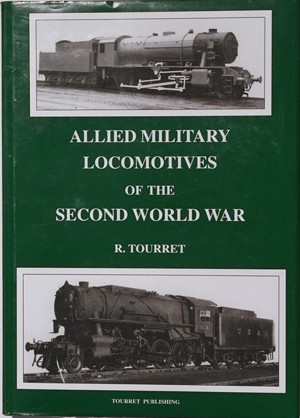
Allied Military Locomotives of the Second World War
By R. Tourret; ISBN 0-905878-06-X; A4 Hardback; over 300 pages of good quality paper; £29.85 GBP.
During the Second World War, many interesting types of locomotives, both steam and diesel, were built for the British War Department and the United States Army Transportation Corps. These were sent all over the world and many of them remained in service long after the war, sometimes with their exact origin forgotten.
In this book, after some 50 years of research into matters generally held secret at the time, the overall story is presented. It starts in the first Section with general descriptions of the campaigns in the different theatres of war from a railway viewpoint, and then follows in the second and third Sections with Chapters giving the class histories of the various British and American types of locomotives, both Sections starting with a numerical list of the locomotives which give the key to the WD and USA/TC numbering structure. Finally, there are some Chapters dealing with odd topics such as various important military railways.
Contains 372 photographs, 43 drawings and 27 maps as well as many stock lists. See the Table of Contents.
Note that this book includes the content of the out-of-print books United States Army Transportation Corps Locomotives (ISBN 0-905878-01-9) and War Department Locomotives (ISBN 0-905878-00-0).
-——————————-

Lawrence Of Arabia By Jeremy Wilson
Lawrence Of Arabia
The Authorized Biography of T. E. Lawrence
By Jeremy Wilson
First published in 1989 by William Heinemann Ltd., London, then in the United States by Atheneum, New York.
Unlike other writings about its subject, Wilson’s book deliberately limits itself to contemporary sources, thus obviating after-the-fact controversial speculations about Lawrence’s actual doings and achievements. The book is 1188 pages, including extensive notes and an index.
Learn more by visiting: http://www.telstudies.org
-——————————–
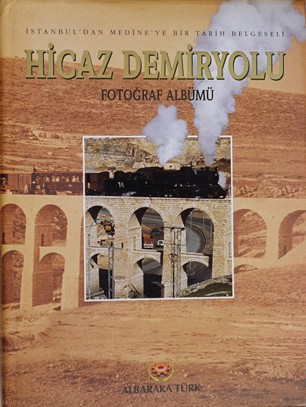
Higaz Demiryolu
A Documentary History
Photographs of the Hejaz Railway
Author: Mustafa Aksay, Editor: Ibrahim Usul, Foreword: Osman Akyuz, Translator: Mevlut Turk, Publisher: Albaraka Turk, Istanbul, 1999, 248 pp, 24cm x 32 cm Language: Turkish, Serial Number 0007130
Although weakened, the 19th century Ottoman Empire continued as one of the strategic powers of the time. The decision to build an East-to-West railway network, known as the Hejaz Railway, was one of the main projects which the political and economic leadership of the day embarked on in the effort to restore the Empire’s fortunes.
The book, in both English and Turkish, gives and brief history of the railway, and presents both historical and contemporary photographs side by side on the same page. High quality, hardcover printing Unfortunately, this book is out of stock.
We are currently trying to locate this book. If you have one and would like to review it, please contact us.
-———

In the Heart of the Desert
In the Heart of the Desert
The Story of an Exploration Geologist and the Search for Oil in the Middle East
by Michael Quentin Morton
Hardback: 282 pages, 83 b+w photographs and illustrations,
23 colour photographs, maps ISBN-10: 095522120X
Reviews
“Mr Morton has created a remarkable book that boasts more than 100 photographs. It will interest anyone who shares Mike’s obvious passion for the Middle East, particularly the places off the beaten track.” Jo Parfitt, The Telegraph
“This thoroughly researched book is a biography of Mike Morton, an exploration geologist, written by his son who has used his father’s journals, correspondence, notes, sketches and photographs to give a fascinating account of the early days in the search for oil.” Julian Paxton, The British-Yemeni Society Journal 2007
“[In the Heart of the Desert] is well illustrated throughout by Morton’s poems and sketches, together with numerous photographs of these early expeditions and early concession maps of the region. While the book is primarily aimed at the non-technical layman, it contains much that anyone interested in the early oil exploration of the Middle East will find fascinating.” American Association of Petroleum Geologists’ Bulletin
“Quentin Morton is to be congratulated on finding a way to describe his father’s extraordinary life and to show how he came to love his work, the countries he worked in and the people of those countries and over all, the desert. [In the Heart of the Desert] is well illustrated with photographs and sketch maps and will enthral anyone with an interest in the countries it describes… It is highly recommended.” The Journal of the Sultan’s Armed Forces Association
“An account of that [the Fahud] expedition, fraught with both peril and adventure, is detailed in an absorbing new book titled In the Heart of the Desert…it provides fascinating insights into the search for oil in Oman and the wider Middle East region.” Oman Daily Observer



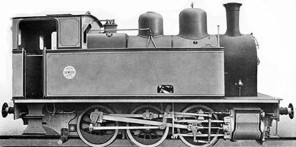
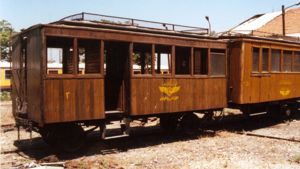

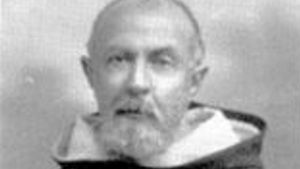

Page Discussion
Membership is required to comment. Membership is free of charge and available to everyone over the age of 16. Just click SignUp, or make a comment below. You will need a user name and a password. The system will automatically send a code to your email address. It should arrive in a few minutes. Enter the code, and you are finished.
Members who post adverts or use inappropriate language or make disrespectful comments will have their membership removed and be barred from the site. By becoming a member you agree to our Terms of Use and our Privacy, Cookies & Ad Policies. Remember that we will never, under any circumstances, sell or give your email address or private information to anyone unless required by law. Please keep your comments on topic. Thanks!